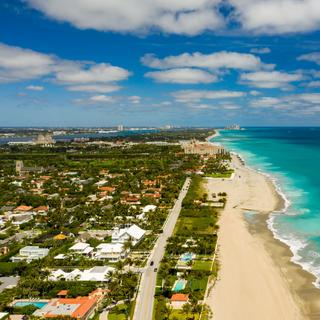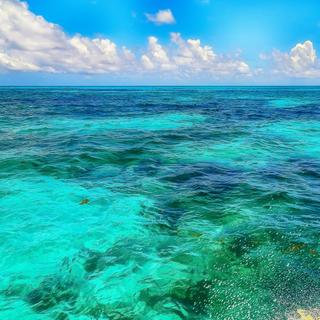
Daytona Beach weather and climate in 2025

Daytona Beach weather and climate in 2025
Day
33 °C
Night
22 °C
Sea
28 °C
Precipitation
153 mm
in month
Rainy days
15 days
in month
Daylight
14 hours
average
Sunshine
9 hours
average
Humidity
78 %
Weather charts for Daytona Beach

Find more destinations like this
Destinations with similar weather to Daytona Beach
Other destinations in Florida - Peninsula east
Closest cities for Daytona Beach
Weather overview for Daytona Beach
Weather overview
Situated in the United States of America, Daytona Beach is characterized by a tropical climate with varying temperatures and rainfall throughout the year. The daily temperatures fluctuate from a cooler average of 20 °C (69 °F) in January to a peak heat of 33 °C (91 °F) in July. Sea temperatures also experience a span, ranging from a cooler 20 °C (68 °F) in February to a warmer 28 °C (82 °F) in August. Typically, April is considered the driest month, with just 6 days of precipitation, while August stands out as the wettest, recording an average of 15 days of rainfall. Nighttime temperatures reach their zenith in August at 23 °C (73 °F), and hit their nadir in January at 9 °C (47 °F).
January weather
In January, Daytona Beach sees a drop in sea temperature, registering 21 °C (69 °F), while the day temperature hovers at a minimum of 20 °C (69 °F). An increase in the number of rainy days begins, totaling 8 days, accompanied by a rise in rainfall to 67 mm (2.65 in). The hours of unclouded sunshine also start to climb, reaching 7 hours. This month records the lowest night temperatures at an average of 9 °C (47 °F).
February weather
February sees an upward trend in day temperatures, hitting 22 °C (71 °F) in Daytona Beach, while the sea temperature dips to its annual low of 20 °C (68 °F). Nighttime warmth begins to ascend, recorded at 10 °C (50 °F). The number of clear sky sun hours progresses similarly to January, increasing to 8 hours. Rainfall follows the same upward trajectory, with totals reaching 76 mm (2.97 in).
March weather
As spring approaches in March, Daytona Beach sees a decrease in rainy days, down to 7 days, while rainfall amounts continue their ascent to 93 mm (3.67 in). The day temperature increases steadily, reaching 25 °C (76 °F), with a concurrent rise in night temperatures, now averaging 13 °C (55 °F). The wind speed is at its annual peak this month.
April weather
April in Daytona Beach brings a surge in day temperatures, sea temperatures begin their seasonal rise to 22 °C (71 °F), and the tourist season blooms. The quantity of rainy days hits an annual low, registering 6 days. The growth in night temperatures is apparent. Maximum sun hours are achieved this month, with 9 hours.
May weather
Tourism is in full swing in May as Daytona Beach experiences a continual upturn in day temperatures, now at 30 °C (86 °F), and sea temperatures edging higher to 24 °C (76 °F). The onset of increased rainfall is marked by an amount of 73 mm (2.88 in), with the number of rainy days also beginning to rise, currently 8 days. A decrease in sunshine hours commences, noted at 9 hours.
June weather
June continues the trend with soaring day temperatures, reaching 32 °C (89 °F), and sea temperatures also rising, recorded at 27 °C (80 °F). The commencement of the wet season is apparent with an uptick in rainy days to 14 days and a significant increase in rainfall volume to 169 mm (6.64 in). The upward trend in night temperatures is sustained, averaging 22 °C (71 °F).
July weather
July is characterized by peak day temperatures in Daytona Beach, registering a sizzling 33 °C (91 °F), while sea temperatures continue their ascent, recording 28 °C (82 °F). The ongoing wet season brings a further rise in the number of rainy days to 15 days, although there's a slight reduction in rainfall to 153 mm (6.02 in). The rise in night temperatures persists, now averaging 22 °C (72 °F).
August weather
August's wet season in Daytona Beach is highlighted by the highest number of rainy days and an uptrend in rainfall. The zenith of sea temperatures is observed at 28 °C (82 °F), and night temperatures also hit their peak for the year. Humidity is at its highest, measured at 80 %.
September weather
The decline in day temperatures is noticeable in September, averaging 31 °C (87 °F) in Daytona Beach, and night temperatures begin their descent, averaging 22 °C (72 °F). The tourist season revives, and a decrease in the number of rainy days emerges, totaling 13 days, while the peak in rainfall volume is detected this month. The dwindling number of sun hours continues, with 8 hours.
October weather
As autumn progresses in October, day temperatures in Daytona Beach further retreat to 28 °C (82 °F) and sea temperatures too see a downturn. The tourist season remains vibrant. Notably, the beginnings of a decline in rainfall quantity can be detected at 111 mm (4.36 in), while the fall in the number of rainy days is more pronounced, now at 8 days. Night temperatures continue their decline.
November weather
November's ongoing tourist season is accented by a continued drop in day temperatures, now at 25 °C (77 °F), alongside a descent in sea temperatures, averaging 23 °C (74 °F). The reduction in rainy days persists, while the lowest rainfall volume for the year is also noted at an average of 60 mm (2.35 in). The night temperature's downturn is evident, averaging 14 °C (58 °F).
December weather
December sees a continuing downward trend in day temperatures, averaging 22 °C (71 °F) in Daytona Beach, and sea temperatures similarly decline, recording 22 °C (71 °F). The nightly chill begins to bite, averaging 10 °C (51 °F). The shortest day lengths of the year are observed, with an average of 10 hours. The minimum sun hours are also experienced this month.
FAQs
How many days of rainfall does Daytona Beach experience in January?
Daytona Beach has approximately 8 days days of rainfall in January.
What is Daytona Beach's average humidity level in February?
In February, Daytona Beach's average humidity is approximately 72 %.
What is the trend for daytime temperatures in Daytona Beach in March?
Daytime temperatures in Daytona Beach are on the rise in March, with an average high of 25 °C (76 °F).
Which month has the highest amount of sunshine hours in Daytona Beach?
April boasts the highest number of sunshine hours in Daytona Beach, with an average of 9 hours.
Is Daytona Beach's seawater warm in May?
The seawater in Daytona Beach is invitingly warm in May, with an average temperature of 24 °C (76 °F).
Does the wet season begin in June in Daytona Beach?
In June, Daytona Beach enters the wet season, as evidenced by the increased number of rainy days, on average 14 days.
How high do the day temperatures reach in Daytona Beach in July?
Day temperatures in Daytona Beach reach their peak in July, averaging around 33 °C (91 °F).
What is the sea temperature peak in Daytona Beach during August?
In August, Daytona Beach experiences its highest sea temperatures averaging 28 °C (82 °F).
What is the pattern for rainfall in Daytona Beach in September?
September in Daytona Beach marks the start of a decline in the number of rainy days, with an average of 13 days.
How does the sea temperature change in Daytona Beach in October?
October brings a noticeable decline in sea temperatures in Daytona Beach, averaging 26 °C (79 °F).
What are the typical day temperatures during November in Daytona Beach?
Typical day temperatures in Daytona Beach during November average 25 °C (77 °F).
What is the average duration of daylight in December in Daytona Beach?
December has the shortest daylight duration in Daytona Beach, averaging around 10 hours per day.











